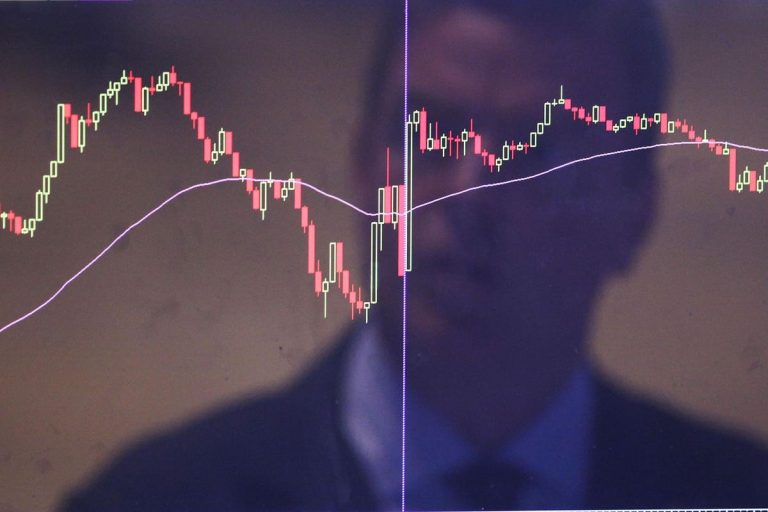Key takeaways
- Typically stocks and interest rates have an inverse relationship, as borrowing money becomes more expensive for businesses and hits their bottom lines
- However, 2023 has seen record gains for the stock market, fueled by the AI revolution and shrugging off recession fears
- The bonds market is still in an inverted curve, pushing up yields to record 2023 levels
With interest rates at their highest levels in decades, the stock market doing so well this year has been a head-scratcher. By any standard, the returns have been excellent. At the same time, bond yields, traditionally where investors flee if there’s economic turmoil, have also been at their highest in decades.
There are a few reasons the stock market is continuing to perform well, and with the economic situation in the U.S. looking increasingly promising, the markets could be in for another solid performance for the rest of the year.
Interest rates have steadily risen to combat high inflation – an issue that can’t be fixed in a day. But all is not lost for your portfolio gains – harness the power of inflation with Q.ai’s Inflation Protection Kit.
It bundles inflation-busting assets like TIPS, precious metals and commodities and the process is managed by an AI helper, which assesses the data, predicts which assets are set to perform well and readjusts the Kit’s holdings to help you maximize your investment and stay one step ahead of inflation.
Download Q.ai today for access to AI-powered investment strategies.
In theory, how do interest rate rises affect stocks?
On the face of it, stocks and interest rates aren’t exactly besties. Higher interest rates make borrowing more expensive for businesses, not just consumers. If a company needs to take on debt for something like M&A activity, the higher rate to pay back the loan could potentially affect their profits – and reduce the share price.
But the consumer side of it comes into play, too. Higher interest rates on mortgages and personal borrowing leave much less room for discretionary spending, impacting businesses’ sales figures. Again, this could decrease stock value if a company misses its sales target.
Then there’s the stock market itself: investors are looking for the most bang for their buck. When interest rates are higher, bond yields generally become more attractive, which can trigger a sell-off in shares as investors put their capital into bonds instead.
Last year, we saw a considerable decline in the stock market as inflation began to run rampant, triggering an aggressive monetary tightening policy from the Fed. The S&P 500 closed the year 19.4% down, the Nasdaw plunged 33%, and the Dow Jones Industrial Average declined 8.8%. Some mega-cap companies, like Meta and Tesla
TSLA
The reality of the stock market in 2023
So, has the stock market conformed to these norms this year? Absolutely not. Interest rates have continued to climb – the Fed recently raised interest rates to their highest level in 22 years – and yet the markets are mostly flying. Today, the S&P 500 has seen an 18% gain, the Dow Jones is up 6.5%, and the tech-heavy Nasdaq has soared a massive 34%, recording its best-ever half-year performance.
Uhh, what gives? Aren’t high interest rates meant to be hammering the stock market still? The stock market has rebounded for a few reasons and could hit an all-time high as soon as August. The AI hype has had a very real effect on some mega-cap stocks, pushing chip maker Nvidia to become the first-ever trillion-dollar value chip company and adding serious gains for Microsoft
MSFT
Then there’s the battle against inflation the Fed has been waging, which increasingly looks like inflation can come down to reasonable levels without slamming the U.S. economy into a recession. The latest consumer price (CPI) index report showed headline inflation at 3% for June, while core inflation, which strips out volatile food and energy prices, arrived at 4.8%. This has given the markets more confidence than if a recession were pending.
It’s hard to say what the second half of the year might bring, but statistically speaking, an excellent first half on the S&P leads to even higher gains by the end of the year – the median increase being 27%.
What’s happening in the bonds market?
We’re in a unique position where the stock market is making gains simultaneously as bond yields have been at their highest point in decades. Bonds are considered a safe-as-houses investment as the government backs them, making bonds a backup asset in the face of an economic downturn.
Right now, Treasury yields are hitting fresh highs as the fallout from the debt ceiling crisis, which pushed the U.S. Treasury’s coffers to record lows, continues as Fitch Ratings downgraded the U.S.’ credit rating from AAA to AA+. The U.S. Treasury also confirmed it would sell $103 billion worth of long-term debt rather than the $96 billion previously announced.
The ten-year yield rose as much as 4.12%, the highest level since November 2022, while 30-year yields are at 4.2%, the highest in nine months. The two-year yield is currently at 4.881%, an inverted yield curve. This is usually the prediction of a future recession, but with reasonably resilient consumer demand, buoyant house prices and a strong labor market, nothing is guaranteed.
Will interest rates continue to rise?
The Fed has always said the decisions around interest rate increases are data-driven. At the July meeting, where the Fed increased interest rates to a target range of 5.25% to 5.5%, Fed chair Jerome Powell was quick to caution against any cries of victory, commenting that “the process of getting inflation back down to 2% has a long way to go”.
But the markets aren’t expecting another interest rate increase for now. The CME FedWatch tool currently pauses interest rates at the September meeting with an 82% probability and a 67% probability for the same in November. As for December, there’s currently a 62% probability for a hold but an 8% chance that the Fed will begin to reverse its monetary tightening policy.
That might seem like wishful thinking, given core inflation is still at 4.8%, and that Powell also reiterated the Fed would “further tighten if that is appropriate”. Let’s see what the next set of inflation data brings.
The bottom line
While traditional economic theory dictates that higher interest rates mean stock prices decrease, this year has continued to defy expectations thanks to the AI revolution. You don’t usually see high bond yields coexisting simultaneously, but frankly, we’ve had to throw out the rulebook for 2023.
The continuation of rising interest rates depends heavily on upcoming inflation data and economic trends, but that hasn’t stopped investors from picturing the light at the end of the tunnel. With a resilient jobs market, perhaps the best-case scenario of interest rate cuts could happen after all.
Regardless of what happens with inflation, the battle to fix it will take time. There’s no need to write off your investment gains with Q.ai’s Inflation Protection Kit, a package of inflation-resistant assets like TIPS, commodities and precious metals.
The secret ingredient is an AI algorithm that does the heavy lifting with the data, predicts where there’s the upside to be found, and reshuffles the Kit’s holdings as required. It’s all in the name of helping you build wealth against a backdrop of high inflation.
Download Q.ai today for access to AI-powered investment strategies.
Read the full article here









